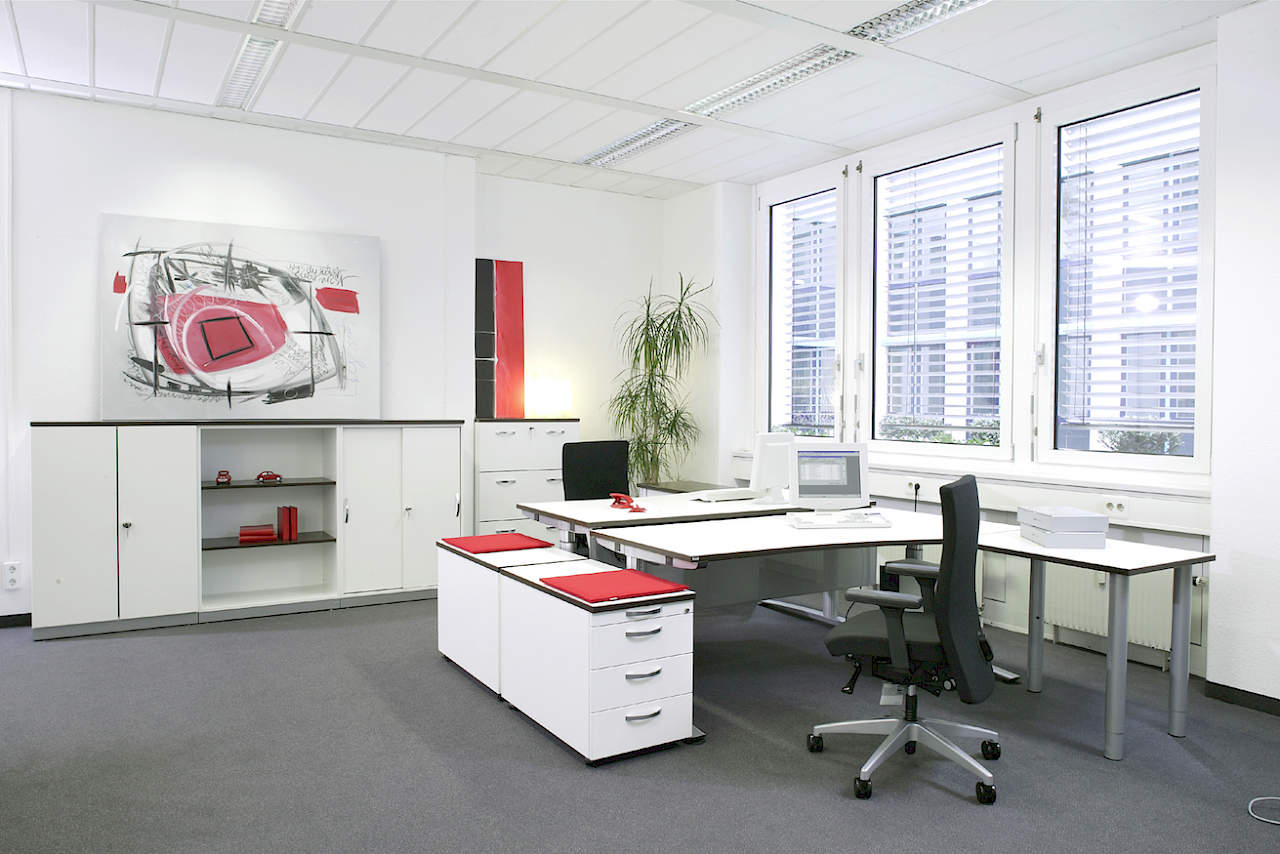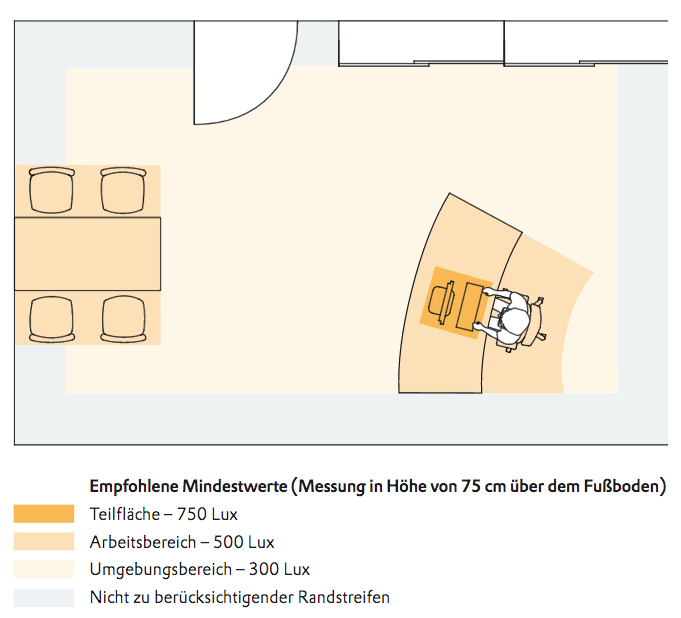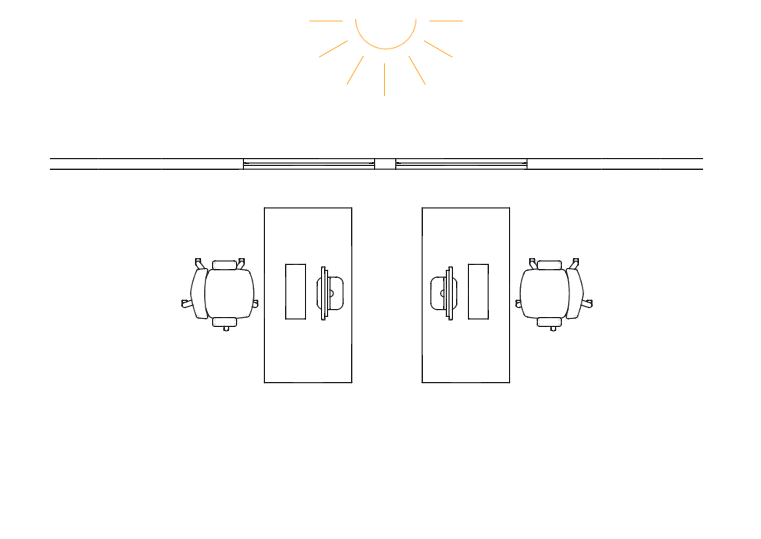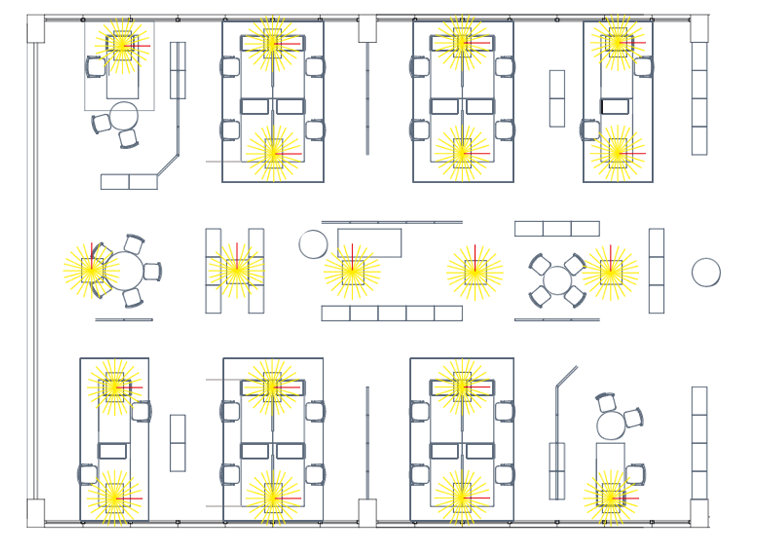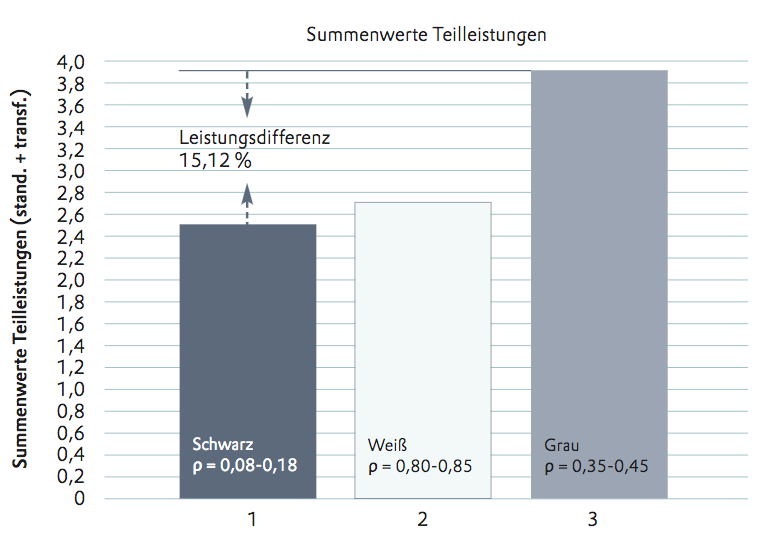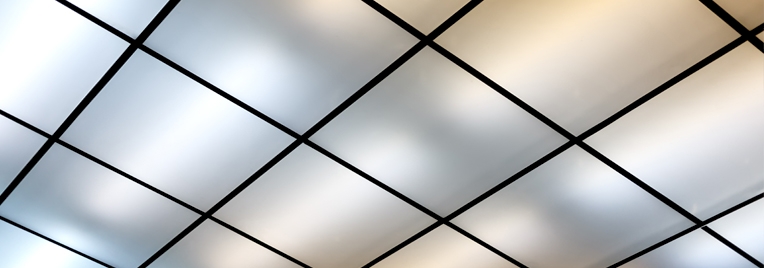
Good lighting at office workplaces
High-quality lighting and good visual design of the working environment are preconditions for clear and fatigue-free work. These factors have a decisive influence on people's well-being and willingness to perform.
On this page you will find a brief overview of the topic of light and lighting in the workplace. More detailed information can be found via the navigation in the right-hand column.
Light
Light and the ability to see are almost automatically mentioned together. Without light, nothing is visible.
The term "light" stands for the electromagnetic radiation of the sun that can be perceived by the human eye in a wavelength range of 380 to 780 nanometres. Within this range, the spectrum is divided into the different colours from violet to blue, green, yellow and red. The totality of all wavelengths results in white.
Lighting with daylight
The ASR A3.4 Technical Guideline for Workplaces unambiguously declares that 'Workplaces must receive sufficient daylight in as much as possible.' Exceptions are possible only under certain conditions. The guideline recommends also that workplaces should be located as close to windows as possible.
You can find out exactly what is meant by "sufficient daylight" in the chapter on daylight.
Planning lighting
In office lighting systems, daylight is supplemented by artificial sources of light. In order to create optimal working conditions, experts take a whole series of parameters into account. The best-known and perhaps most important parameter is the illumination level. It is measured in lux (lx). The following minimum requirements apply for offices:
- Ambient lighting: 300 lx
- Workplace lighting: 500 lx
- Task zone lighting: 750 lx

Furthermore, you should pay attention to the light temperature. It is specified in calvin (K) and determines the light colour. A distinction is made between:
Warm white: below 3,300 K
Neutral white: 3,300 - 5,300 K
Daylight white or cool white: above 5,300 K
Neutral and cool light make reading easier. This is particularly beneficial for older people. Warmer light creates a more homely atmosphere.
Several rules…
…should be observed:
- Always set up workplaces in such a way that the lines of sight run parallel to the windows, and always place artificial light sources to the side of the monitors.
- Provide anti-glare measures in order to avoid both direct and reflected glare.
- Remember to provide protection against the sun. These measures prevent not only glare but also the buildup of too much heat due to solar radiation.
- Match the materials and colours of the walls, floor and ceiling to the lighting design. Most importantly, pay attention to the ceiling areas above the workplaces. In brightly illuminated rooms, a strongly reflective ceiling can cause reflected glare.
- Even though pure white or black desk surfaces look attractive, they are bad for the eyes and have a negative effect on work performance. Wählen Sie also besser leicht getönte, matte Oberflächen.

Wirkung von Licht
Es lohnt sich, auf eine gute Beleuchtung im Büro zu achten – zugunsten der Gesundheit der Beschäftigten und ihrer Arbeitsleistung. Wissenschaftliche Untersuchungen zeigen beispielsweise, dass schlechte Beleuchtung die Informationsaufnahme behindert und das auch dann, wenn die Betroffenen die Beeinträchtigung als nicht relevant erachten.

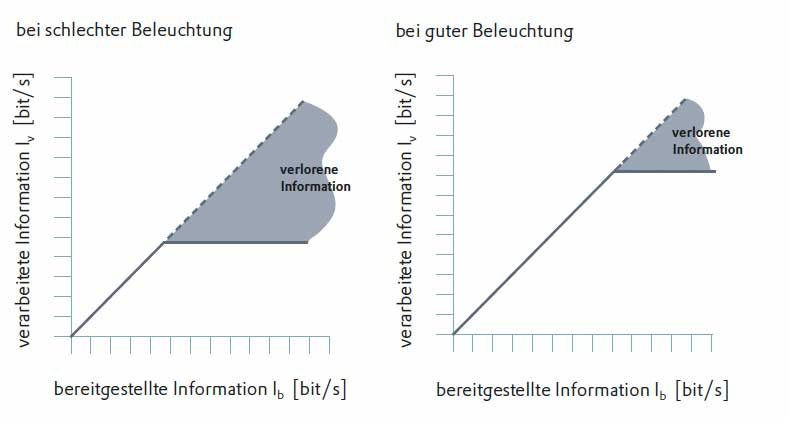
Die nebenstehende Grafik zeigt den Informationsverlust bei guter und schlechter Beleuchtung.
Je länger eine Informationsbereitstellung dauert, d. h. je mehr Informationen bereitgestellt werden, desto größer wird der Unterschied.



